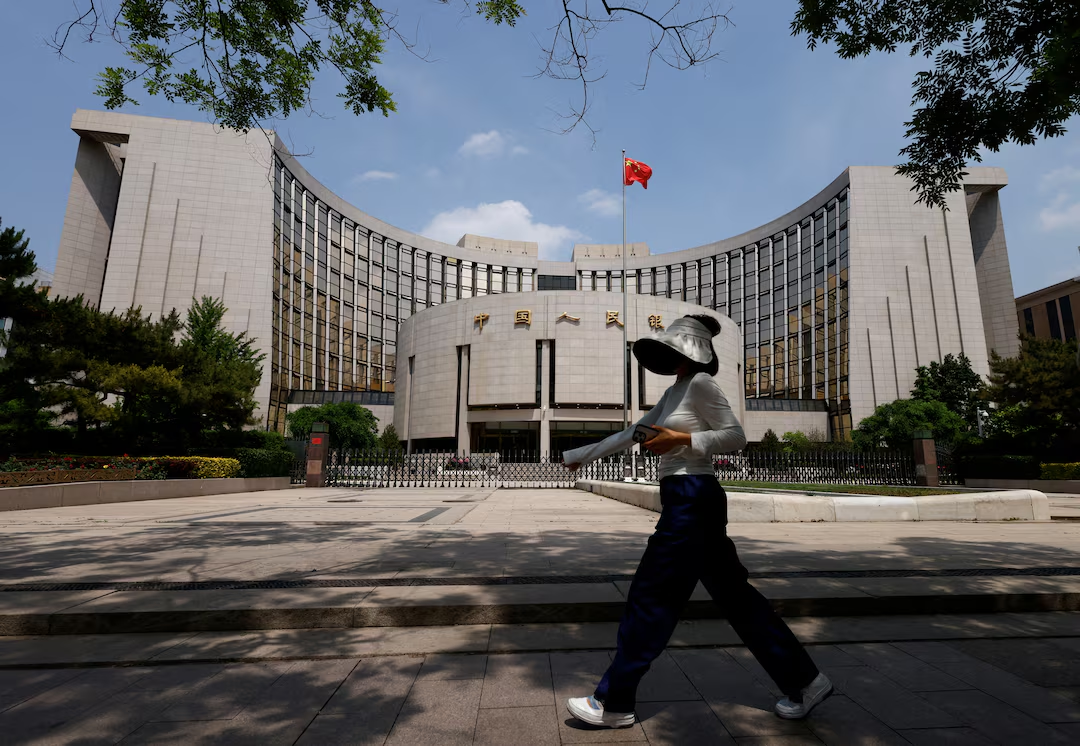China Construction Bank (CCB), one of the country’s largest state-owned lenders, has reduced its deposit interest rates in a move widely seen as part of Beijing’s broader efforts to stimulate economic activity and encourage consumer spending amid a sluggish post-pandemic recovery.
The rate cuts, announced on Monday, affect both demand and time deposits. CCB lowered its one-year time deposit rate by 10 basis points to 1.45%, while two- and three-year deposit rates were also trimmed slightly. The move follows similar actions by other major banks earlier this year and signals growing coordination between Chinese financial institutions and central authorities seeking to revive growth.
Analysts say the rate adjustments are aimed at steering money away from low-yielding savings accounts and into the real economy, particularly through increased consumption and investment. “This is part of a broader monetary easing effort,” said Zhang Zhiwei, chief economist at Pinpoint Asset Management. “Lower deposit rates reduce the cost of capital for banks, making it easier to support lending to businesses and households.”
China’s economic recovery has remained uneven, with domestic demand weak, the property sector still under pressure, and youth unemployment high. Despite recent measures including interest rate cuts, tax relief, and infrastructure investment, consumer confidence and private sector activity have not fully rebounded.
Lowering deposit rates is seen as a necessary—though cautious—step to increase liquidity in the market. “Chinese households have been saving more amid uncertainty,” said Iris Pang, chief economist for Greater China at ING. “The government wants to nudge people into spending rather than hoarding cash.”
The People’s Bank of China (PBOC) has also been encouraging banks to support the real economy by reducing financing costs. However, rather than deploying aggressive monetary policy, Chinese regulators have opted for more targeted and incremental moves like guiding state lenders to lower deposit rates.
CCB’s move could set the tone for other major lenders, including the Industrial and Commercial Bank of China (ICBC), Bank of China (BOC), and Agricultural Bank of China (ABC), which are expected to follow suit in the coming weeks. Together, these banks dominate China’s financial system and play a pivotal role in implementing policy directives.
While the move is welcomed by businesses seeking cheaper credit, some analysts caution it may not be enough to significantly boost economic momentum. “The fundamental challenge remains weak consumer sentiment and structural imbalances,” said Larry Hu, chief China economist at Macquarie. “Rate cuts can help, but they won’t fix deeper issues like declining demographics or property sector overhangs.”
Chinese stock markets responded modestly to the news, with the CSI 300 index gaining 0.4% by midday Tuesday. Financial sector shares rose slightly on expectations that the lower deposit costs will improve banks’ profit margins.
International observers are watching closely for further signs of stimulus from Beijing, especially as global economic headwinds increase. The International Monetary Fund recently urged China to implement stronger structural reforms to ensure long-term growth.
For now, CCB’s deposit rate reduction is a small but telling indicator of Beijing’s current economic strategy: incremental loosening, cautious optimism, and an ongoing effort to balance stimulus with financial stability.
Source: Reuters



